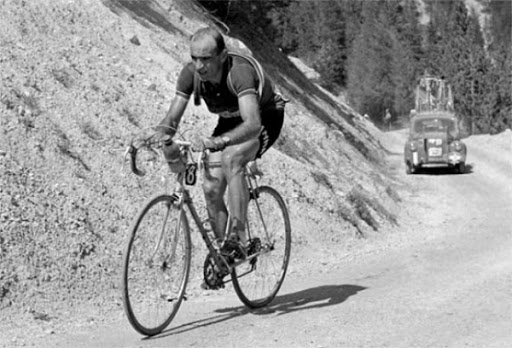This Saturday, 176 cyclists will set off on the famous “roads of the Tour” from Florence, capital of the arts. For the first time, the Grande Boucle starts in Italy. The Tuscan city promises a spectacular staging of the kind that practically only this race, the biggest in the world, is able offer to the thousands of television viewers who follow it.
First, a tour of Florence
Before the official start, the peloton will take to the streets of the city, passing under the famous dome of Santa Maria del Fiore, in front of the medieval pediment of the Palazzo Vecchio and then crossing the Arno on the Old Bridge—a picture-postcard sequence. The riders will then slowly make their way to the Ponte a Ema district, followed by Gavinana, at the exit of which the real start of the stage is scheduled, taking them to Rimini on the Adriatic coast.

In these Florentine suburbs, the cyclists’ wheels will roll along the same tracks as those of one of their most illustrious predecessors, the great Gino Bartali. The winner of the 1938 and 1948 Tours de France (he could have won many more had it not been for the Second World War), famous for the titanic battle he sometimes waged against his compatriot Fausto Coppi, was a pure product of Florence, around which he wore out his first tires.
A tribute is planned, of course: first at the Cycling Museum that bears his name in Ponte a Ema, where his first sports club, S.S. Aquila, was based. This will be followed by another tribute in the town of Gavinana, where he lived until the end of his life. The peloton will cross the square that bears his name, in the center of which stands a statue of him.
Anything but a coincidence
“It’s obviously anything but a coincidence that we’re passing through these places. Starting from Florence, you can’t pretend Bartali didn’t exist,” admits Tour de France director Christian Prudhomme, who is known for his attention to the route of the Tour. “Good is something you do, not something you talk about. And some medals are pinned to your soul, not to your jacket,” said Gino Bartali.

Using his bike to help save Jews during World War II
He will be honored not only as a cyclist, but also as a humble hero of the Second World War, a glorious secret he took to his grave in 2000. After his death, testimonies came to light claiming that “Gino the Pious,” so nicknamed because of his strong Catholic faith, had helped Jews during the war. At the request of the then Archbishop of Florence, Elia Angelo Dalla Costa, he hid identity papers inside his bicycle frame and took them to the Franciscan communities of Assisi, which were sheltering Jews.
In 2006, Bartali was recognized as Righteous Among the Nations by the Yad Vashem Memorial. In recognition of his work, he was also posthumously awarded Israeli nationality in 2018, two days before the launch of the Giro d’Italia from Jerusalem.
“Gino Bartali has an extraordinary dimension beyond the champion he was,” confirms Christian Prudhomme, who was received by the Pope a week before the start of this year’s Tour de France. A yellow jersey from the great champion’s victory in the 1948 Tour was presented to the pontiff on this occasion.



